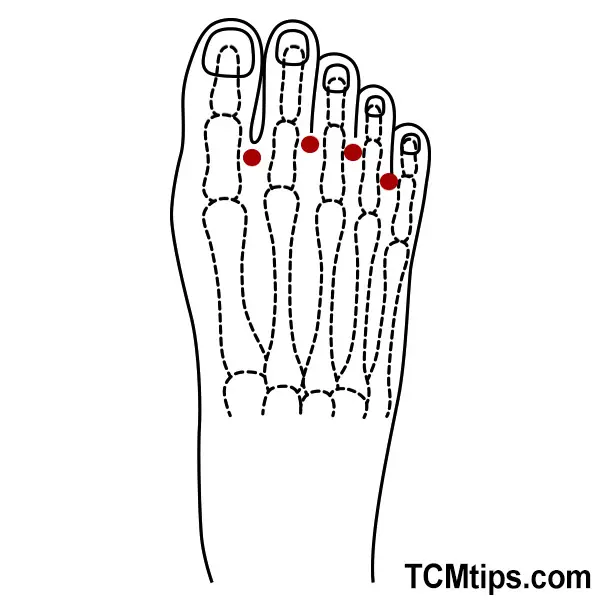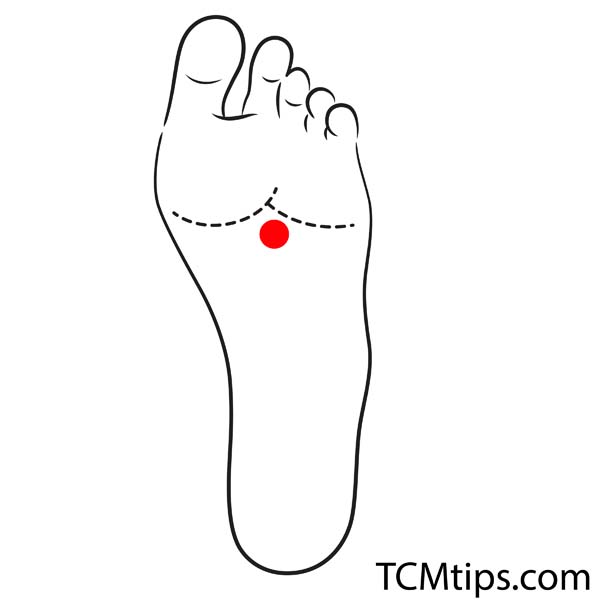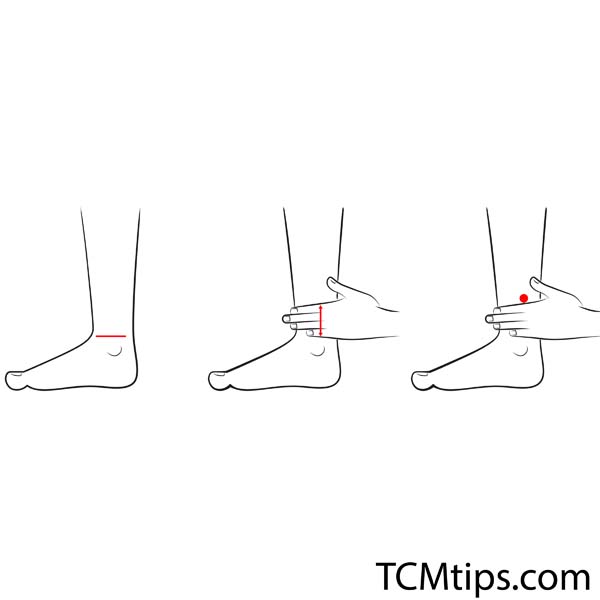Warm Up Your Feet: 4 Pressure Points to Boost Blood Circulation This Winter
Cold winters and poor blood circulation do not mix well. This mix of conditions often results in discomfort and the exacerbation of pre-existing health issues. I tend to fall on the lowers side when it comes to blood pressure, which is good until I combine it with a sedentary work style and a cold environment. As a result, my feet were painful, and walking was difficult until I found these pressure points to increase blood circulation in the feet.
Once I started treating these points regularly, I noticed a significant improvement in my blood circulation and started feeling more comfortable in my feet. Best Of all, these points are easily accessible and have few to no side effects if treated properly, so you can easily correct your poor circulation from your chair!
Acupoint: M-LE-8 (Other Names: Ba Feng/Eight Winds)

M-LE-8 is a great way to warm up the whole foot, but it is especially focused on the toes, which often get the coldest and have the poorest circulation. It’s also worth noting that the stimulation of this point is great for flushing waste and stagnant energy from the feet, which may enhance healing for whatever condition is causing your poor circulation.
This point is unique in its activation as it includes the stimulation of multiple points across the food using a similar pattern. First, place your thumb between your fourth toe and pinky toe. Apply firm rubbing pressure to the skin in the crease between these toes for 3 seconds. Then move on to the next toe crease and continue this pattern until you reach your big toe. You can do this up to three times. It is also beneficial to stretch the toes out with the fingers and drink some warm water after activating this point.
Acupoint: KI-1 (Other Names: Kidney-1/Yong Quan/Gushing Spring)

This kidney channel point is a great way to improve circulation throughout the body, but its location makes it especially useful for improving blood circulation in the feet. Commonly used as acupressure for circulation in hands, this point is easily accessible and also serves to headaches, vomiting, dizziness, and other forms of discomfort that you may feel during the cold winter months.
KI-1 Is located at the base of each foot. It falls between the inner and outer balls of your foot and is easiest to locate if you split your foot into three equal-sized sections starting from the tip of your toes. This point is one-third of the way down the base of your foot, starting from your toes. In this area, you will feel a slight depression where you should apply firm pressure three times in intervals of a few seconds. You will notice this point’s power after some time, during which your legs and feet will start to feel warmer.
Acupoint: ST-36 (Other Names: Stomach-36/Zu San Li/Leg Three Miles)

This powerful point is commonly referred to as one of the best nausea and headache acupressure points. This is a direct result of the point’s ability to reduce pain and calm the body while enhancing blood flow so the body can better balance its health. Remember, vascular disease and issues with blood pressure can have lasting impacts, so it is best that you treat them as soon as you notice.
ST-36 is not located on the feet; instead, it can be found 4 finger-widths below the knee towards the outside of the leg. There you will feel a slight depression where you can apply firm pressure. This point includes some bending if you are seated in a chair, so it is often recommended that you sit on the floor with your knee towards your chest for the easiest access.
Acupoint: SP-6 (Other Names: Spleen-6/San Yin Jiao/Three Yin Intersection)

As a spleen channel point, SP-6 is effective in decreasing pain through the regulation of blood circulation. This capability has made it popular as a form of acupressure for headaches during pregnancy, but it also makes this point ideal for creating healthy blood flow in the feet.
Start at the inner protrusion of your ankle and measure upwards by 4 finger-widths. At that height, you will feel a slight depression right on the edge of the shinbone, and that is where you will want to apply pressure with your thumb while intensifying that pressure by firmly grabbing the inside of your leg with your fingers.
Why Is It Important To Maintain Good Circulation In The Winter?
Poor circulation can result from a variety of diseases or conditions, but it is, when treated properly, a reversible symptom. While poor circulation can result from internal conditions, it is also affected by external conditions, such as activity and temperature.
Cold weather restricts blood flow even further. As the body focuses on keeping blood and warmth closest to the internal organs, it directs less blood towards the extremities, including the feet. This can be problematic as a lack of blood circulation can cause irreversible tissue damage to the feet.
Does Acupressure Improve Blood Circulation?

There are a number of ways to treat poor blood circulation, but pressure points to increase blood circulation in the feet are considered to be very accessible and effective for most people. A study was completed that supported acupressure and acupuncture as effective methods to cause an increase in blood flow in various areas of the body.
The study of improved blood circulation from acupressure is so promising that researchers have focused on more specific effects as well. A different study found acupressure to cause a significant improvement in the lower-limb blood flow of patients with peripheral arterial occlusive diseases, a condition that is otherwise dependant on medications for treatment.

Try our Anti-Aging Gua Sha Tool designed to bring out your skin’s natural glow.
Best Gua Sha Product- Anti-Aging: The tool is designed to target 11 specific aging signs such as wrinkles and sagging skin. By following the 7-step routine, users can improve skin firmness and reduce fine lines naturally.
- Enhances Skincare Routine: It works effectively with serums and lotions, boosting absorption and efficacy of skincare products.
- Visible Skin Improvement: Users can expect a smoother complexion, reduced puffiness, and a more youthful appearance.
 P. Sze
P. Sze 

















